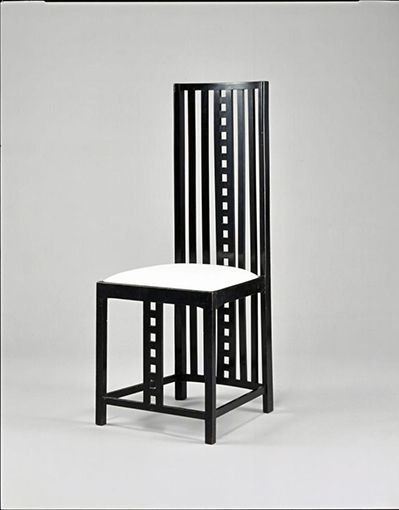
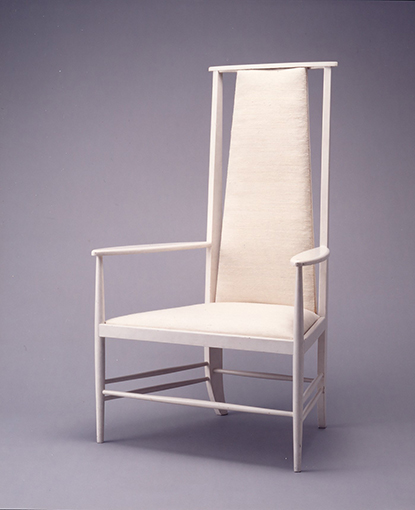
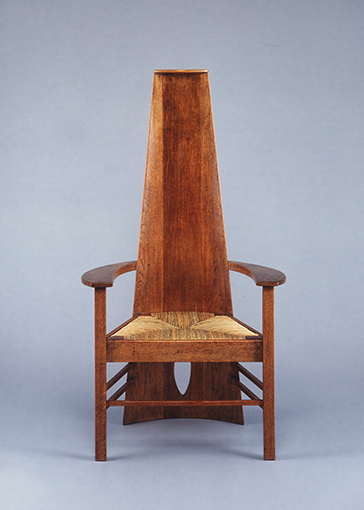
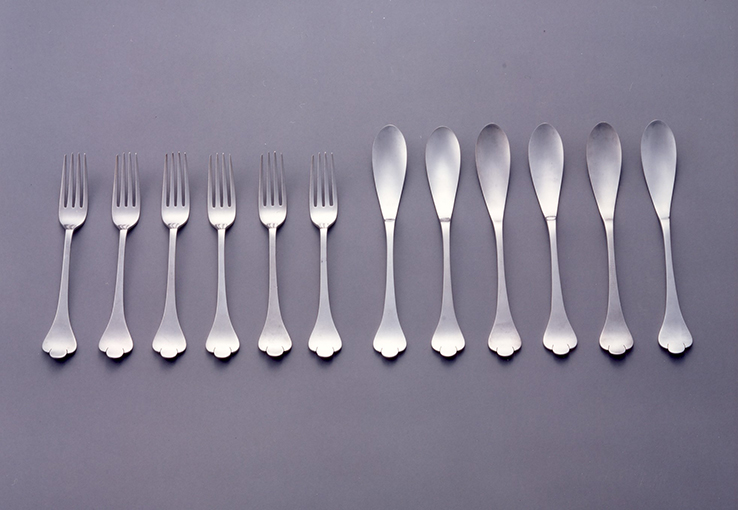
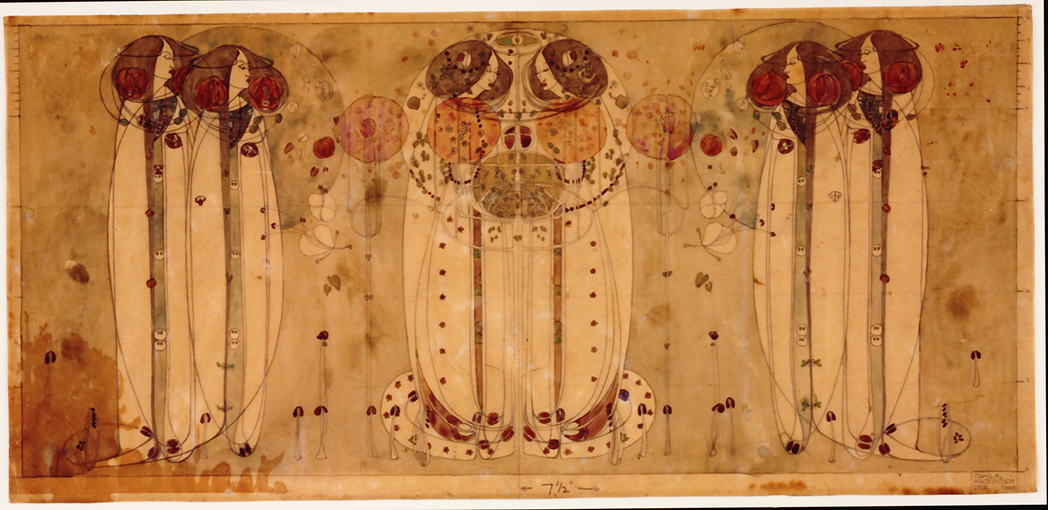
[Audio Guide]
This work is thought to one of the underdrawings for a decorative panel titled The Wassail . The slender, elongated bodies of the women are fit into elegant arcs, and it looks very much like a Mackintosh design. Tearooms were extremely popular in Glasgow at this time, and Mackintosh received a commission from the businesswoman Catherine Cranston to supervise the renovation of the interiors of the rooms at the Ingram Street Tearooms. The Wassail was installed in a dining room for female use that had white-painted walls, and was commonly known as “The White Room.” On the opposite wall hung a panel designed by Mackintosh’s future wife Margaret, The May Queen. These works give expression to winter's sleep and summer's rebirth, and taken together they form the cycles of life and the seasons.
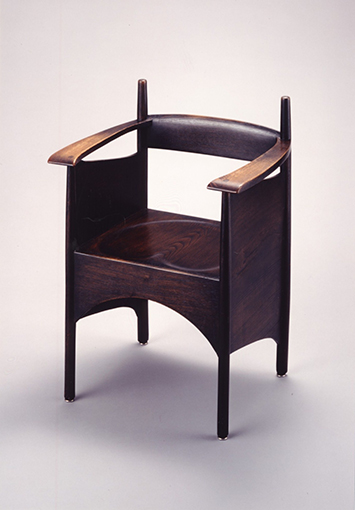
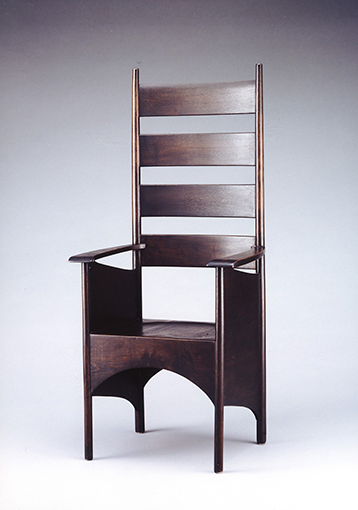
Mackintosh was commissioned to remodel the Argyle Street Tea Rooms in Glasgow, handling everything from the overall plan to the decoration of the individual rooms and the design of the furniture. Made for use in the dining room, this is the first example of the type of high-backed chair that would become synonymous with Mackintosh's style. In contrast to the sense of solemnity of oak as a material, a light elegance is conveyed by the openwork design of a flying bird in the ovalshaped head rest and the slits in the backrest that extend straight downward into the floor. The backboard support extends over the seated person’s head, setting the rhythm for the entire dining room. While dining, the headboard would interrupt the sightline of others in the diner’s vicinity. Mackintosh himself preferred this kind of chair, and used same ones in the dining room of his own home.
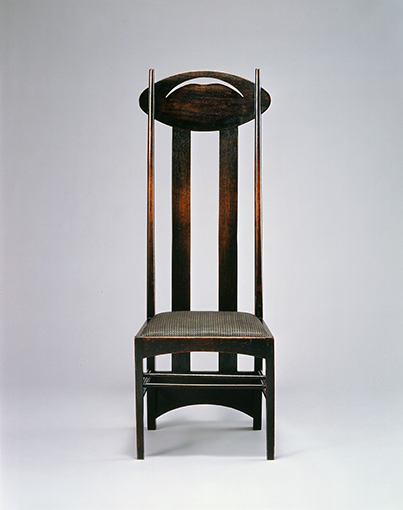
[Audio Guide]